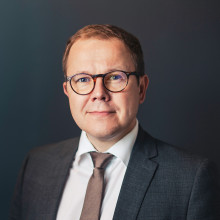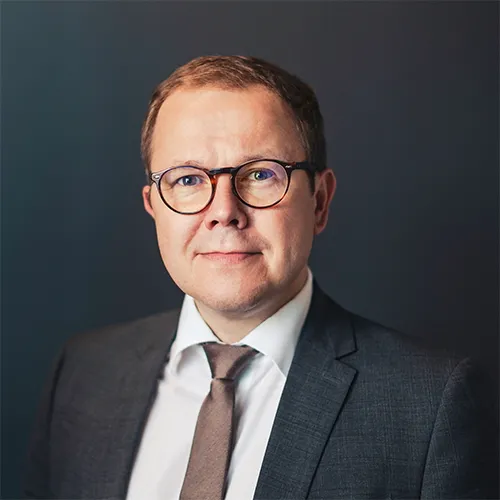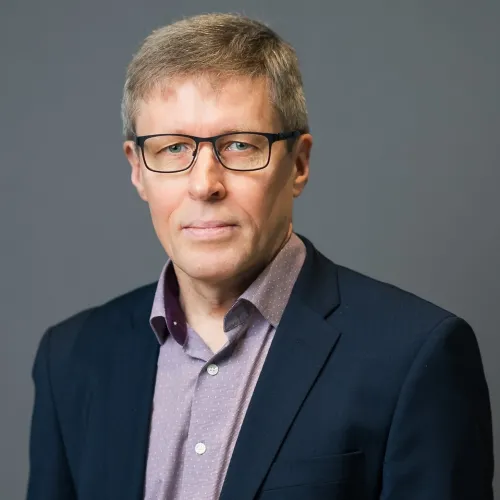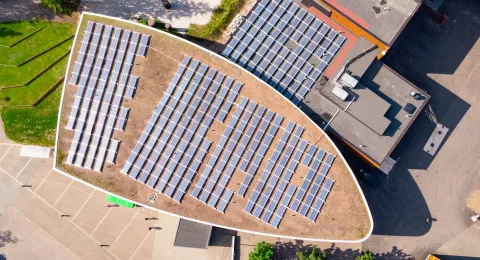LUT University is committed to making its campuses in Lappeenranta and Lahti carbon negative already by 2024.
"We won't settle for carbon neutrality, we will develop the fastest possible route towards carbon negative operations. The goal is ambitious, but we believe we will achieve it, as we are continuously producing technological solutions," says rector Juha-Matti Saksa.
Saksa stresses that the carbon negative goal for its own campuses is only one way that LUT is creating and verifying opportunities for making permanent shifts towards more environmentally sustainable operations.
"One of our research missions is to influence the global energy system as a whole and to support change towards an emissions-free future. We produce expertise in, for example, carbon dioxide capture from industrial emissions sources and the production of synthetic fuels. Our carbon handprint also consists of hundreds of students who graduate each year and take their sustainability change skills into different sectors."

At the core of the carbon negative roadmap is the Green Campus research and operating environment, built at the Lappeenranta campus during the 2010s, where LUT already produces some of the electricity it needs using emissions-free solar energy.
A team of sustainability research experts is responsible for the journey towards carbon negativity. Professor Risto Soukka explains that LUT is taking a strong research approach to creating solutions.
"International calculation standards help determine the carbon balance, but in this case this is only the first step. In order to achieve the goal of becoming carbon negative, the carbon balance must be sufficiently detailed to reveal the real climate benefits of solutions developed at our university."
"Our outlook on the world says that emission compensation is not the primary solution, as the university's task is to actively find solutions to societal problems. At LUT, combating climate change is a key part of the strategy", Soukka continues.
In addition to the physical research environment, LUT's strong expertise in emission-free electricity production is the most important enabling factor for achieving carbon negativity. Solutions are sought both through technology as well as changes in operating methods and system-level design solutions.
"At the Lappeenranta campus, we already have a significant amount of measurement data on energy balances, covering areas such as electricity, heating and ventilation. We're adding indicators and further refining our data platform to comprehensively understand the potential for reducing consumption and emissions," says Associate Professor Mika Luoranen.
Joining operational emissions data with market data is essential for change
Luoranen explains that combining the smart electricity grid technologies and measurement results with market data and forecasts for the electricity and thermal energy markets is a key element in the management of the energy system.
"When the goal is to genuinely reduce greenhouse gas emissions and make flexible consumption part of the solution, real-time consumption information is needed. Historical averages data is not enough."
Luoranen explains how energy balances and data from emissions sources are gathered at the campus level both by building and by function. The examination progresses from direct emissions sources to indirect emissions and extends to the community as a whole.
"We link together people's activities with, for example, the facility utilisation rates. In addition to technological solutions, we are constantly critically analysing how we operate as a community. When we turn to reducing indirect emissions, there is no longer any doubt that the challenge applies to the activities of everyone," Luoranen says.
LUT moved to its new campus in Lahti just last summer. These new premises have seen their use purpose completely reshaped by the renovation, and there is currently only limited information about its energy balances for the campus. However, being faced with a much greater task didn't stop them getting stuck in.
"In Lahti, we are starting from a relatively blank slate, and there is more work to be done. However, it was self-evident to us that both campuses share the same objective. It is not natural for LUT to just take on easy things," says rector Saksa.
More information:







